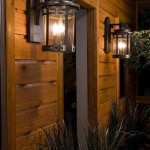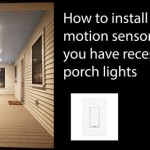Essential Aspects of Lighting For Outdoor Night Photography
Outdoor night photography offers a unique opportunity to capture ethereal and evocative images. However, working with low-light conditions requires careful consideration of lighting to achieve the desired effects. Here are some essential aspects to consider when lighting for outdoor night photography:
1. Light Sources:
Identifying and utilizing natural and artificial light sources is crucial. Streetlights, car headlights, neon signs, and even the faint glow of the moon can provide ambient illumination. Experiment with different light sources to create varying moods and atmospheres.
2. Light Direction:
The direction of light can dramatically impact the composition and depth of the image. Front lighting creates flat, evenly lit subjects, while side lighting emphasizes textures and depth. Backlighting can create silhouettes and dramatic effects, especially when combined with smoke or fog.
3. Light Intensity:
The intensity of light is a key factor in night photography. High-intensity light can overpower the subject or create harsh shadows. Low-intensity light requires longer exposure times, which can introduce camera shake or motion blur. Aim for a balanced exposure that retains detail without making the subject appear too bright or dark.
4. Light Color:
The color of light can affect the mood and tone of the image. Warm light, such as from streetlights or candles, creates a cozy and inviting atmosphere. Cold light, such as from LED streetlights or flashlights, can convey a more sterile or futuristic feel.
5. Light Modifiers:
Light modifiers, such as diffusers and reflectors, can help control and shape the light. Diffusers can soften harsh shadows and create a more even illumination, while reflectors can bounce light back onto the subject to fill in shadows and provide additional illumination.
6. Camera Settings:
Camera settings play a critical role in capturing well-lit night photos. Use a wide aperture (low f-number) to let in more light and create a shallow depth of field. A high ISO setting can increase light sensitivity, but be aware that it can introduce noise into the image.
7. Tripod and Image Stabilization:
A tripod is essential for night photography to minimize camera shake during long exposures. Image stabilization systems, both in the camera and in lenses, can also help reduce blur caused by camera movement.
8. Post-Processing:
Post-processing software can be used to further enhance the lighting in night photos. Adjust exposure and contrast to balance the image, use shadows and highlights to accentuate textures and depth, and apply color grading to create a desired atmosphere.
Remember, night photography is an experimental process. Don't be afraid to experiment with different light sources, angles, and settings to achieve the desired effects. By understanding the essential aspects of lighting, you can elevate your outdoor night photography and capture stunning and evocative images.

Using Lights For Outdoor Night Time Portrait Photography

Night Photography Tips For Beginners Adobe

15 Night Event Photography Tips Lighting And Best Settings

Using Lights For Outdoor Night Time Portrait Photography

When The Light Gets Low Embracing Dusk And Beyond

Westcott University Shooting A Nighttime Portrait With Softbox

The 3 Best Smart Outdoor Lights For Backyards Of 2024 Reviews By Wirecutter

How To Light Your Patio Or Yard Without Annoying Neighbors The New York Times

4 Things To Consider When Selecting Outdoor Lighting Solutions

Don T Let The Darkness Get You Down Invest In Cobblestone Outdoor Lighting To Extend Your
Related Posts







